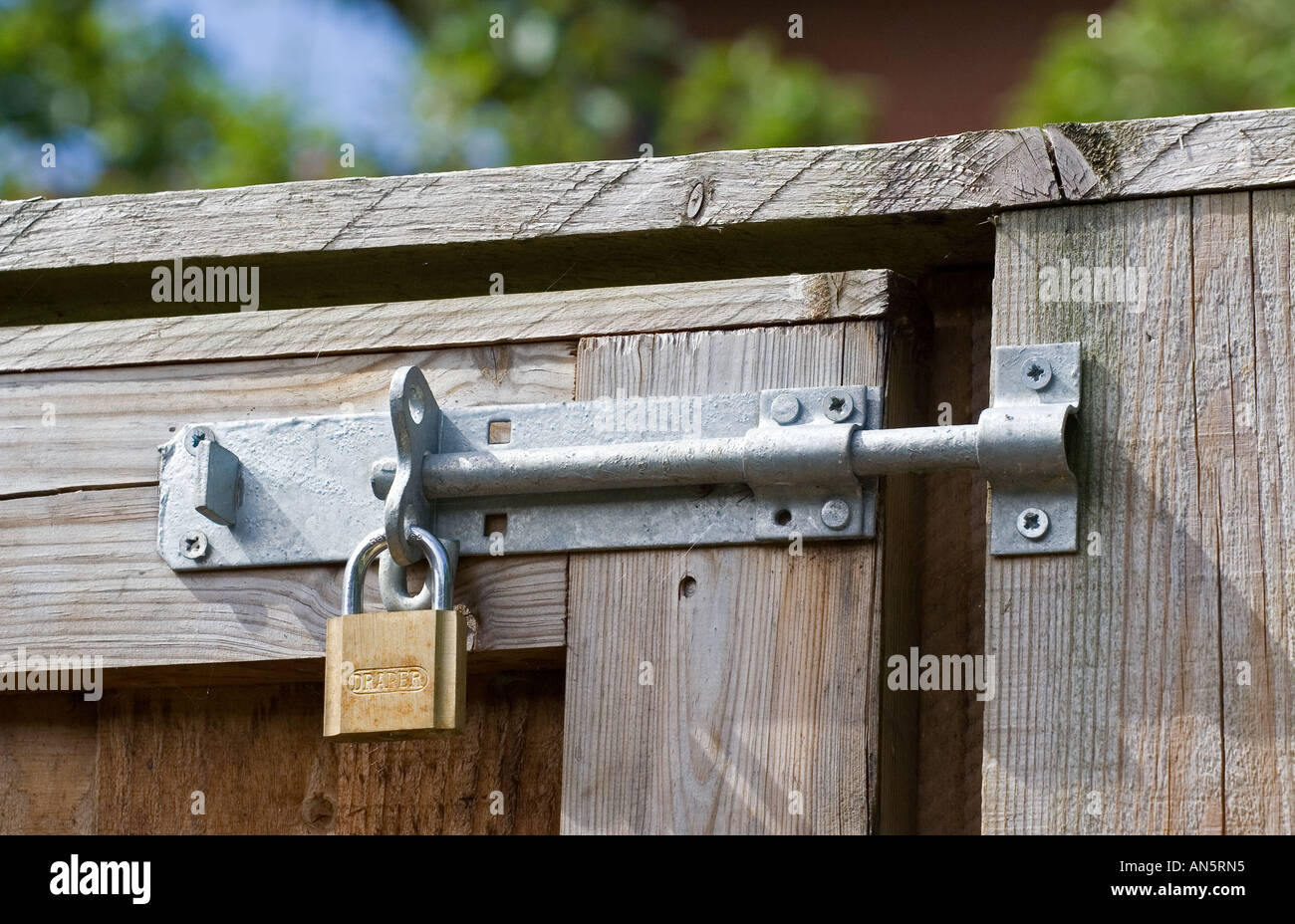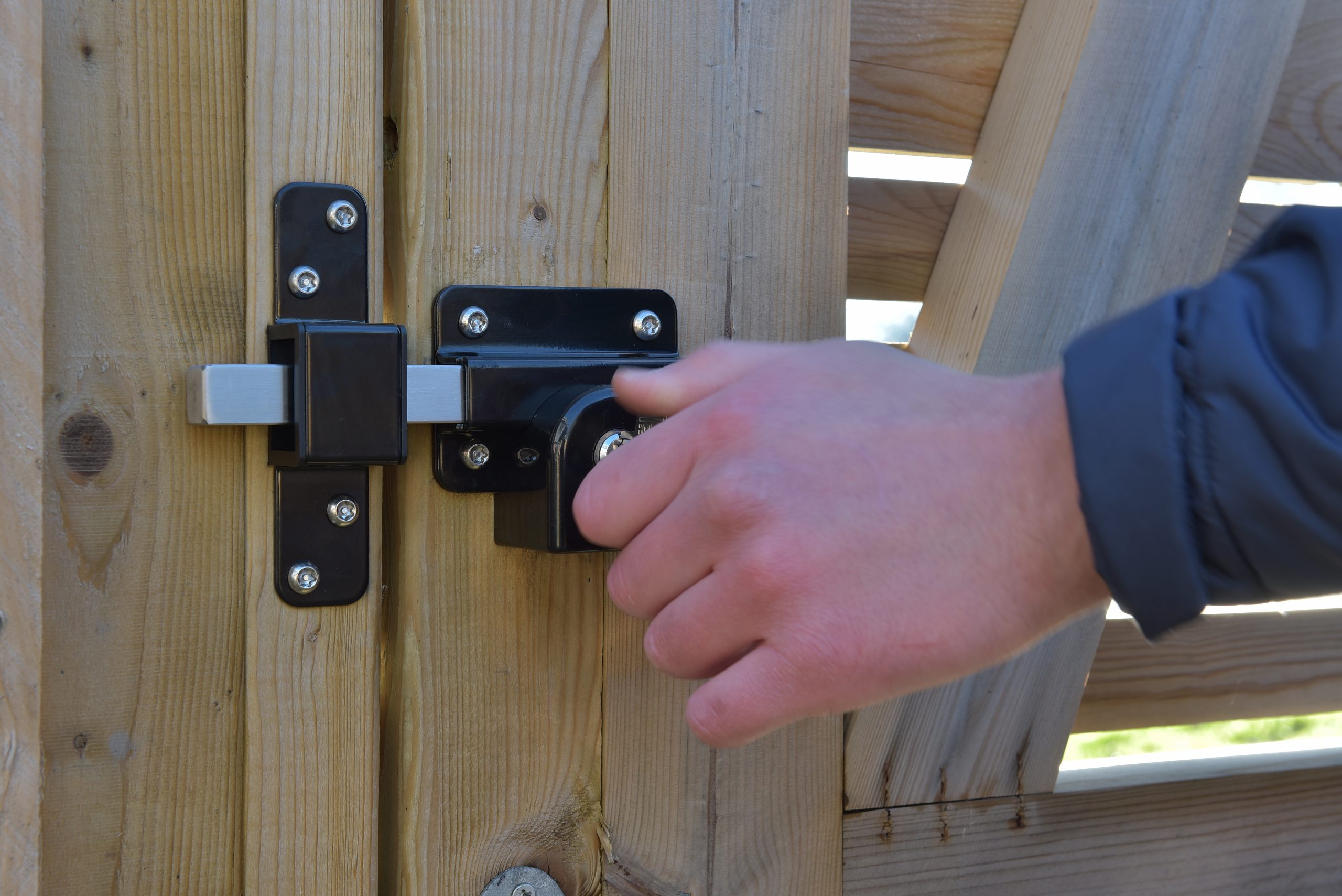To lock a garden gate, use a padlock and secure it through the latch or hasp on the gate. A properly secured garden gate is essential for ensuring the safety and security of your property.
Whether you want to prevent unwanted entry or keep your pets and children safe within the confines of your garden, locking your gate is a simple yet effective solution. By using a padlock, you can easily secure the gate by fastening it through the latch or hasp.
This will provide an additional layer of protection against unauthorized access. We will discuss some practical tips and techniques to help you effectively lock your garden gate and maintain peace of mind. So, let’s dive in and explore the various options available to you.

Credit: www.alamy.com
How to Lock a Garden Gate : Step by Step Guide
Choosing The Right Lock
When choosing a lock for your garden gate, it is important to consider the gate material and style. The type of lock you select should be compatible with the gate’s design and functionality. For instance, a heavy-duty padlock may be suitable for a sturdy metal gate, while a simple latch lock could work well for a wooden gate.
There are various types of locks available for garden gates, each with its own features and benefits. These include key locks, combination locks, and electronic locks. Key locks provide traditional security and can be easily operated with a key. Combination locks offer convenience, as they don’t require a key but utilize a unique code instead. Electronic locks, on the other hand, provide advanced security with features like keyless entry and remote access.
Determining the level of security required is crucial. Consider the value of items inside your garden, the level of privacy desired, and the general security concerns in your area. This will help you choose a lock that meets your specific security needs.
Preparing The Gate For Lock Installation
Assess the gate’s condition and make any necessary repairs. Clean and remove any debris from the gate. Ensure the gate is properly aligned and functions smoothly.
Installing The Lock
Installing a lock on your garden gate is essential for ensuring the security and privacy of your outdoor space. To begin, gather the necessary tools and materials, which may include a screwdriver, measuring tape, and the lock itself.
Next, measure and mark the ideal placement for the lock, keeping in mind the height and accessibility that would work best for you. Using a drill, carefully create holes for the lock components, making sure they align with the markings. Finally, attach the lock mechanism securely, ensuring it is snug and properly aligned for smooth operation. Once installed, test the lock to ensure it is functioning correctly. This simple process will give you the peace of mind that your garden gate is secure and protected.
Enhancing Gate Security Measures
Enhancing gate security is crucial to protect your garden and ensure peace of mind. While using a lock is the first step, there are additional measures you can take to reinforce your gate’s security.
Install a latch or deadbolt: Adding a sturdy latch or deadbolt will provide an extra layer of protection. Choose a high-quality mechanism that is resistant to tampering or force.
Implement a gate alarm system or surveillance cameras: Utilizing modern technology can greatly enhance security. A gate alarm system will sound an alert when someone attempts to breach the gate, while surveillance cameras can capture any suspicious activities.
By exploring these additional security measures, you can effectively strengthen the security of your garden gate and deter potential intruders.
Maintaining The Gate Lock
Regularly inspect the lock mechanism of your garden gate to ensure it is functioning properly. Check for any signs of wear or damage, such as rust or loose screws. Lubricate the moving parts of the lock, such as the bolt and latch, to ensure smooth operation. Use a silicone-based spray or graphite powder to avoid attracting dirt and debris.
Replace any worn-out or damaged components promptly, such as the lock cylinder or key. This will help maintain the security and longevity of your gate lock. By taking these maintenance steps, you can ensure that your garden gate remains securely locked and functional.
Troubleshooting Common Lock Issues
Lock alignment and latch mechanism problems can sometimes become a nuisance. **Addressing these problems promptly** is essential for maintaining the security of your garden gate. If you notice that the lock **is misaligned**, try **adjusting the strike plate and latch** to ensure proper alignment. In case of rust, corrosion, or a jammed lock, **cleaning and lubricating the lock mechanism** can often resolve the issue.
**If the key fails to turn smoothly or the lock gets stuck**, consider **replacing the key**, as worn-out keys may cause lock malfunctions. Alternatively, you may need to **replace the lock itself** if it is damaged or faulty. Remember, attending to lock issues quickly will help prolong the lifespan of your garden gate and provide the security it requires.
Frequently Asked Questions On How To Lock A Garden Gate
What Is The Best Way To Lock A Garden Gate?
To lock a garden gate effectively, use a sturdy padlock that fits the latch securely.
How Do You Make A Garden Gate Secure?
Secure your garden gate by reinforcing it with strong materials, installing a sturdy lock, and maintaining regular inspections.
Can You Lock Your Backyard Gate?
Yes, you can lock your backyard gate.
How Do You Put A Lock On A Gate?
To put a lock on a gate, follow these steps: 1. Choose a suitable lock for your gate. 2. Locate the spot on the gate frame where the lock will be installed. 3. Drill holes into the gate frame according to the lock’s specifications.
4. Attach the lock to the gate frame using screws or bolts. 5. Test the lock by opening and closing the gate to ensure it functions properly.
Conclusion
To secure your garden and keep unwanted visitors out, properly locking your garden gate is essential. By following the steps outlined in this blog post, you can ensure that your gate is secure and your garden remains protected. Start by selecting a high-quality lock that is suited to the size and material of your gate.
Make sure to position the lock in a way that it is difficult for potential intruders to access or tamper with. Regular maintenance, such as oiling hinges and cleaning the lock, will also help to extend its lifespan and effectiveness.
Remember to always use a strong, unique key to maximize security. By implementing these strategies, you can have peace of mind knowing that your garden gate is locked securely and your beloved plants and belongings are safe from harm.

